Knowing what to feed your dog can be an enormously confusing enterprise, particularly when there is so much disagreement among supposed experts. Most veterinarians recommend the industry standard dog “chow” or “kibble”, comprised of an admixture of cereals such as corn, by-products from the meat industry, and a smattering poorly absorbed synthetic nutrients. Despite their advocacy for this type food, however, I am far from convinced that this is the best diet for dogs. In fact, I think this type of dog food directly contributes to many of the health problems that veterinarians end up treating, including joint problems such as arthritis and hip dysplasia. My eldest dog – a collie-lab mix – is turning 14 this year, and to look at her and watch her play and run, she does not seem like an “old dog”. Since she was a pup I have fed her a diet of raw meaty cartilaginous bones and organ meats, and as a herbalist, I always took care of her health needs and she never saw a vet. When she was around seven years old, we were unable to have her with us for about 18 months, and a family friend took care of her. One of the first things she did was take my dog to the vet, getting her vaccinated, and then put on the expensive vet-recommended “chow” stocked in the clinic. But despite all of this extra cost and concern, my dog’s health declined significantly, and 18 months later when we took her back, she was 20 lbs overweight, had acquired a tumor on her shoulder, and was ridden with arthritis. Fortunately, just two months back on her diet of raw meaty cartilaginous bones and organ meats, she lost all the weight, and the arthritis completely disappeared. Now at 14 years old, she literally runs circles around dogs that are a third her age fed the standard vet-recommended diet. When hanging out with other dog owners at the park, I frequently mention my experience with diet, and among those owners that take my advice, they report a gradual disappearance of issues like hip dysplasia and arthritis. This is also the feedback I get from dog owners that consult me for health advice.
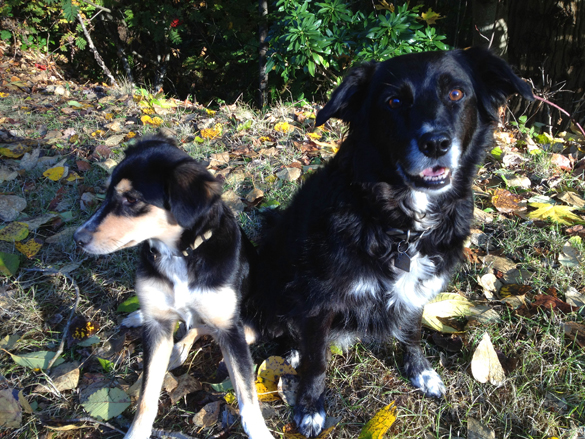 Like wolves, dogs are members of the Carnivora order, which also includes related mammals such as tigers, wolverines, hyenas and bears. Being a member of the Carnivora order doesn’t mean that all these animals exclusively eat meat, but that it is a vital and necessary part of their diet. This is no less true for dogs. The latest research suggests that dogs evolved from a now extinct species of wolf about 18,000 years ago, well before the agricultural revolution or Neolithic period, when humans were still hunter-gatherers. Humans took advantage of their evolutionary traits, and domesticated these wolves to help with hunting. Thus, the first food fed to dogs by humans was meat, usually as the leftover carcass or scraps from butchering. As humans modified their diet, so too did the dog’s diet also change, although because dogs were used primarily for hunting and herding, their diet still remained high in meat and animal products. Recent evidence that dogs produce the starch digesting enzyme amylase is offered as a reason to feed dogs the high-starch diet recommended by your typical vet, but it is important to note that not all breeds produce salivary amylase, such as the Siberian Husky. And while this evolutionary feature may seem important, when viewed in the broader context, this trait is really just an example of a biological adaptation rather than a preference. Certainly dogs ate carbohydrate if it was given to them, but it doesn’t mean that it was an optimal practice. Using a discrete biological trait such as amylase to justify the recommendation that dogs eat a high-starch diet is a huge leap of logic that borders on the irrational, particularly when we look at the problems of a high carbohydrate diet in humans, who are supposedly much better adapted to eating starchy foods than carnivores.
Like wolves, dogs are members of the Carnivora order, which also includes related mammals such as tigers, wolverines, hyenas and bears. Being a member of the Carnivora order doesn’t mean that all these animals exclusively eat meat, but that it is a vital and necessary part of their diet. This is no less true for dogs. The latest research suggests that dogs evolved from a now extinct species of wolf about 18,000 years ago, well before the agricultural revolution or Neolithic period, when humans were still hunter-gatherers. Humans took advantage of their evolutionary traits, and domesticated these wolves to help with hunting. Thus, the first food fed to dogs by humans was meat, usually as the leftover carcass or scraps from butchering. As humans modified their diet, so too did the dog’s diet also change, although because dogs were used primarily for hunting and herding, their diet still remained high in meat and animal products. Recent evidence that dogs produce the starch digesting enzyme amylase is offered as a reason to feed dogs the high-starch diet recommended by your typical vet, but it is important to note that not all breeds produce salivary amylase, such as the Siberian Husky. And while this evolutionary feature may seem important, when viewed in the broader context, this trait is really just an example of a biological adaptation rather than a preference. Certainly dogs ate carbohydrate if it was given to them, but it doesn’t mean that it was an optimal practice. Using a discrete biological trait such as amylase to justify the recommendation that dogs eat a high-starch diet is a huge leap of logic that borders on the irrational, particularly when we look at the problems of a high carbohydrate diet in humans, who are supposedly much better adapted to eating starchy foods than carnivores.
When I feed my dogs, I simply dump the raw meaty bones or organ meats on the grass and let them eat off the ground. No kibble, no bowl, no clean-up. What I have always found interesting is that dogs fed like this rarely gulp down their food. Instead, their actions mirror that of a predator: they sit beside the meat awhile before they eat, often licking it in much the same manner as a predator does after they kill the animal. And then as their appetite is whetted, they slowly begin to eat, but only until they are satiated. Many times I have found a couple pieces of raw meat or bone leftover that the dogs didn’t want because they were too full. But if ever give my dogs kibble, they eat every single piece, regardless of whether they are hungry or not. It appears that for dogs, kibble is like potato chips: it’s hard to stop when you start. And if the dogs overeat the chow or kibble, and then drink water, it can cause massive bloating, leading to stomach twisting (gastric torsion), often requiring emergency surgery. This is not an issue, however, when the dog is fed the proper diet.
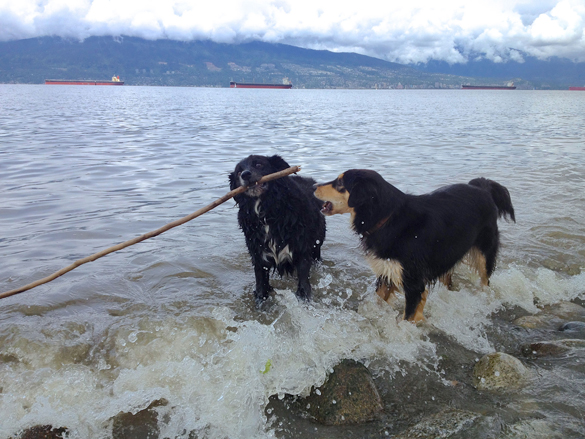 Feeding dogs raw food frequently invites the criticism of vets and pet health authorities, but as I have already addressed the evolutionary and biological issues, it’s easy to see that the motivation for this criticism is an economic one. Of course your vet is going to recommend the food that is stockpiled in his storeroom – it’s a very simple business decision. Just like physicians, whose education and practice is highly influenced by the drug industry, veterinary education and practice is heavily influenced by the pet industry, which accounts for over $55 billion in annual sales in the US alone. However, there is no money to be made by the pet industry or your vet if you feed your dog raw meaty bones and organ meats. So, they tell you it’s all wrong, even despite the fact that dogs are biologically designed to eat raw meat and bone. The pet industry and vets also like to tell owners about the dangers of E. coli and other infectious organisms found in raw meat, suggesting that this poses a grave risk to humans. The research, however, suggests just the opposite: that dog’s produce a saliva that is capable of completely inhibiting potential pathogens such as E. coli. Likewise, in 20 years of pet ownership and clinical practice, I have never seen any dog or human get sick from their dog eating a properly prepared diet of raw meat and bone. When my kids were young, my dog used to lick their sticky baby faces clean after dinner, even just after she was gnawing on a greenish-looking bone she had buried in the back yard a few weeks back. Of course, it might have helped that my kids have never been on antibiotics, and have healthy functioning immune systems. I can see problems, however, with potential contamination in immunodeficient patients, so be mindful about handling or feeding raw meat around people with immune problems.
Feeding dogs raw food frequently invites the criticism of vets and pet health authorities, but as I have already addressed the evolutionary and biological issues, it’s easy to see that the motivation for this criticism is an economic one. Of course your vet is going to recommend the food that is stockpiled in his storeroom – it’s a very simple business decision. Just like physicians, whose education and practice is highly influenced by the drug industry, veterinary education and practice is heavily influenced by the pet industry, which accounts for over $55 billion in annual sales in the US alone. However, there is no money to be made by the pet industry or your vet if you feed your dog raw meaty bones and organ meats. So, they tell you it’s all wrong, even despite the fact that dogs are biologically designed to eat raw meat and bone. The pet industry and vets also like to tell owners about the dangers of E. coli and other infectious organisms found in raw meat, suggesting that this poses a grave risk to humans. The research, however, suggests just the opposite: that dog’s produce a saliva that is capable of completely inhibiting potential pathogens such as E. coli. Likewise, in 20 years of pet ownership and clinical practice, I have never seen any dog or human get sick from their dog eating a properly prepared diet of raw meat and bone. When my kids were young, my dog used to lick their sticky baby faces clean after dinner, even just after she was gnawing on a greenish-looking bone she had buried in the back yard a few weeks back. Of course, it might have helped that my kids have never been on antibiotics, and have healthy functioning immune systems. I can see problems, however, with potential contamination in immunodeficient patients, so be mindful about handling or feeding raw meat around people with immune problems.
The development of the various breeds we see today, including the toy breeds such as the Pomeranian, Shih Tzu and Chihuahua breeds, is relatively recent. While humans have kept dogs for thousands of years, for the vast majority of this time they were kept outside as work animals: for hunting, herding, or guarding, and very little attention was paid to breeding. Since the 1800s, however, the breeding of dogs became a hobby for humans, and in a couple hundred years of experimentation a huge number of breeds have been developed, often creating mutations that result in problems such as breathing issues, sensory function or reproduction. And since it has been such a short period of time, we have yet to fully apprehend the possible consequences of this genetic experimentation, and how it affects factors such as diet and health. For example, a toy breed like a Pomeranian is clearly a carnivore, but the small body and digestive tract precludes this breed from eating the same way that my collie-lab eats. It is important to note that toy breeds like this were created intentionally as “lap dogs”, and so for probably the last 30-40 generations, these breeds have been routinely fed table scraps.
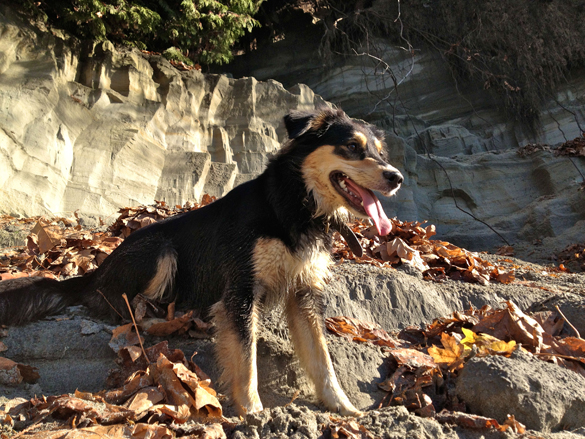 When a puppy is fed raw meat, bone and offal just after weaning, there are rarely any problems. If the pup was raised on chow, however, switching the pup over to a raw diet can create some temporary digestive issues. When we got our most recent pup, another collie-mix, she was weaned onto kibble, and you could tell: she was quite skinny and her coat was rough and dry. For the first few weeks, I hand fed her little pieces of meat and offal, and gave her big globs of organic grass-fed butter to boost her weight. Soon she put on weight, and her coat became soft and shiny. But for the first month or so she did have issues with occasional diarrhea. As we continued feeding her raw meat and bone, however, her stools firmed up and took on the typical appearance of dog fed a raw diet: small, hard stools that quickly turn white and crumble away. I consider these stools to be one of the great benefits of the raw food diet: small, not smelly, not sticky, and rapidly biodegradable. This is very much unlike the kibble poops I see at the dog park: large, sticky and smelly, and very much a biohazard, particularly around kids. And unlike the poop of dogs fed a raw meat and bone diet, which dissolves away within a couple weeks, I can still find those kibble poops at the dog park several months later, growing all kinds of “interesting” fungi.
When a puppy is fed raw meat, bone and offal just after weaning, there are rarely any problems. If the pup was raised on chow, however, switching the pup over to a raw diet can create some temporary digestive issues. When we got our most recent pup, another collie-mix, she was weaned onto kibble, and you could tell: she was quite skinny and her coat was rough and dry. For the first few weeks, I hand fed her little pieces of meat and offal, and gave her big globs of organic grass-fed butter to boost her weight. Soon she put on weight, and her coat became soft and shiny. But for the first month or so she did have issues with occasional diarrhea. As we continued feeding her raw meat and bone, however, her stools firmed up and took on the typical appearance of dog fed a raw diet: small, hard stools that quickly turn white and crumble away. I consider these stools to be one of the great benefits of the raw food diet: small, not smelly, not sticky, and rapidly biodegradable. This is very much unlike the kibble poops I see at the dog park: large, sticky and smelly, and very much a biohazard, particularly around kids. And unlike the poop of dogs fed a raw meat and bone diet, which dissolves away within a couple weeks, I can still find those kibble poops at the dog park several months later, growing all kinds of “interesting” fungi.
Older dogs that aren’t doing well on the vet-recommended diet can also be put on a raw meat, bone and offal diet, but there may be some additional challenges. Older dogs used to eating cooked food may balk at the idea of eating raw food, and in such cases, you may have to partially cook the meat, searing it on the outside to create an enticing aroma and flavour. Avoid cooking the meat completely, however, as this destroys the delicate proteins and makes it more difficult to digest, often resulting in nasty dog farts that nobody wants to smell. Likewise, a dog that is used to eating some carbohydrate in their diet may not do well on a 100% meat and bone diet, and thus some starchy foods such as cooked root vegetables or rice can introduced or retained in the diet. I recommend against mixing starches and proteins at the same meal, however, as starches interfere with protein digestion, and once again, often lead to digestive problems and gas. Above-ground vegetables can also be added to the diet, and some dogs love veggies like broccoli and kale. Personally, I couldn’t be bothered to prepare vegetables specifically for my dogs, as they often get the leftover veggies mixed up in a little fat leftover from dinner. But when it comes to veggies, my dogs already have that covered by eating certain species of grass, such as Agropyron (Couchgrass), also used by herbalists as a medicine and food. Eating grass isn’t so much a food for dogs as it is dietary fibre, used to clean out their guts by either vomiting up the grass or pooping it out. And when it comes to vegetarianism and dogs, I think making your dog follow a vegetarian diet is an example of extreme anthropomorphism, and a quite possibly, a form of animal cruelty. If you are a strict vegan that is uncomfortable handling raw meat, please don’t get a carnivore as a pet: find an animal that is better suited to your lifestyle.
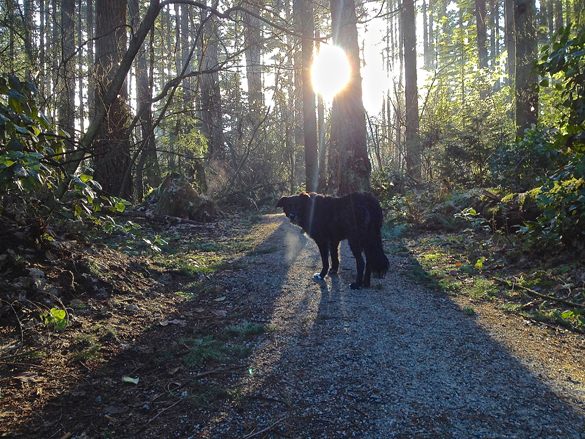 The following is a list of food that I feed my dogs, and what I recommend to pet owners when they consult with me. Most of these foods can be found at your local butcher, fishmonger, or grocery chain: no need to go to a specialty pet food store, unless you want to spend more money. Mostly the diet consists of raw cartilaginous, meaty bones supplemented by organ meats. One frequent mistake pet owners make when buying bones is that they buy big marrow bones. But your dog isn’t going to be able to eat this, and even if they could, they would cut their gums on the sharp, sawn edges of these big bones. Thus, choose smaller, cartilaginous bones that the dogs can chew up and swallow. This can include poultry bones, which are spongy when raw, but become dehydrated, sharp and splinter very easy after cooking. Another important point is to make sure that all the meat you give your dog has been frozen solid for about a week or so. This will kill any parasites in the meat, such as tapeworm or the trematode Nanophyetus salmincola that can infect raw fish. Don’t feed your dog frozen meat, however, as this is too hard to digest: make sure that it is completely thawed before feeding.
The following is a list of food that I feed my dogs, and what I recommend to pet owners when they consult with me. Most of these foods can be found at your local butcher, fishmonger, or grocery chain: no need to go to a specialty pet food store, unless you want to spend more money. Mostly the diet consists of raw cartilaginous, meaty bones supplemented by organ meats. One frequent mistake pet owners make when buying bones is that they buy big marrow bones. But your dog isn’t going to be able to eat this, and even if they could, they would cut their gums on the sharp, sawn edges of these big bones. Thus, choose smaller, cartilaginous bones that the dogs can chew up and swallow. This can include poultry bones, which are spongy when raw, but become dehydrated, sharp and splinter very easy after cooking. Another important point is to make sure that all the meat you give your dog has been frozen solid for about a week or so. This will kill any parasites in the meat, such as tapeworm or the trematode Nanophyetus salmincola that can infect raw fish. Don’t feed your dog frozen meat, however, as this is too hard to digest: make sure that it is completely thawed before feeding.
Cartilaginous, meaty bones: feed on a daily basis
- raw chicken/turkey necks, backs, breast, feet etc.
- raw pork tail, as well as small neck/rib bones
- small meaty beef bones and trim
- raw fish: small whole fish; the head, tail, trim of larger fish (e.g. salmon)
- toy breeds: as above, but broken into smaller, thinner pieces; also smelts, herring, and other small fish; cornish game hen; raw frozen mice (available from pet stores)
Offal (organ meats): 2-3x/week
- liver (beef, pork, chicken, etc.)
- heart (beef, pork, chicken, etc.)
- gizzards (beef, pork, chicken, etc.)
- tripe (stomach)
- kidney
The following is a list of (possible) supplemental foods that can be added to the dog’s diet, depending on their breed, size, and preference:
- raw egg yolk
- bone broth
- fermented and cooked cereals, e.g. brown rice, quinoa
- steamed/baked veggies
- fat trimmings, marrow fat (skimmed from soups), grass-fed butter, coconut oil
- nutritional yeast
Of course there are other foods you might consider, and then, the huge number of supplements that the pet industry is trying to cash in on. As I recommend supplements infrequently in humans, however, my attitude towards dogs is that they should be getting everything they need from their diet. For example, there is no need to give your dog glucosamine and chondroitin if they are eating cartilaginous bone, because that’s exactly where these constituents come from! So you can save your money, and avoid all of those pet food supplements, just like you can avoid most of the human ones too, if you eat a proper diet. Beyond this, it is important to ensure that the diet is varied, and that there is proper regulation of the amount and frequency of food. As I stated, what is good about a raw food diet is that dogs tend not to gorge, and only eat to their satiation. Of course, some dogs just like to eat no matter what, so keep an eye on your dog’s belly and adjust the amount of food according. As for frequency, there is no need to feed a healthy dog more than twice a day, and for most dogs, once a day is enough.
As I stated, whenever you make changes to a dog’s diet there may alterations in their bowel habits, usually in the form of diarrhea. Keep an eye on their stools, and if the looseness doesn’t resolve make sure that they are getting enough cartilage and bone, which acts like fibre to bind them up. In a similar fashion, you can add some more plant fibre to the diet, such as quinoa or brown rice. In most cases, however, these alterations in bowel function resolve in a few days. Some foods such as liver are also notorious for causing looseness of the stool, and if bowel control is an issue, make sure to only feed small amounts of liver at a time.
If you decide to feed your dog starchy foods, remember that dogs don’t naturally accumulate tartar or plaque on their teeth. Comprised of a biofilm produced by lactic acid bacteria, the tartar-forming bacteria are fueled primarily by dietary carbohydrates. Thus, if you are going to feed your dog starchy foods like rice, you will have to follow-up with some tooth brushing. On a diet of raw meat, bone and offal, however, tartar does not tend to accumulate, meaning that you can dispense with novelties such as dog toothbrushes and bacon-flavoured toothpastes.
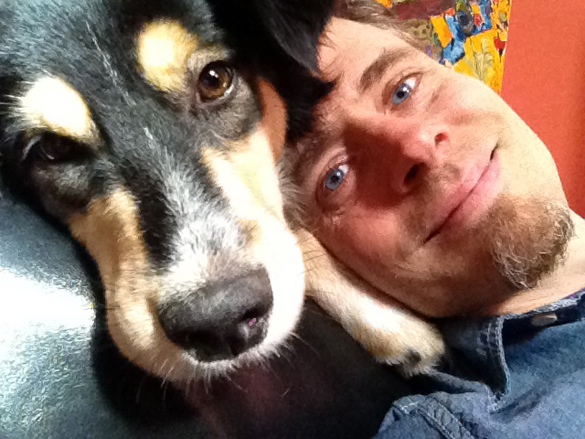
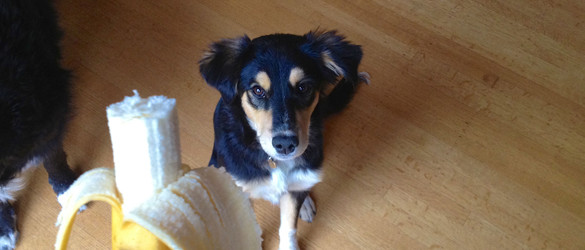

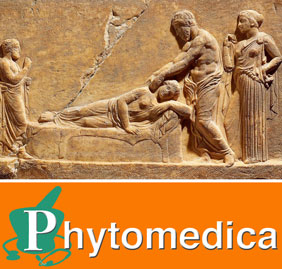

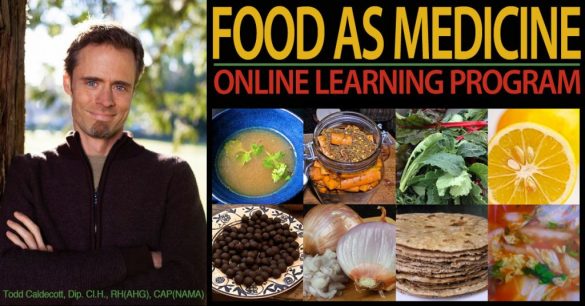
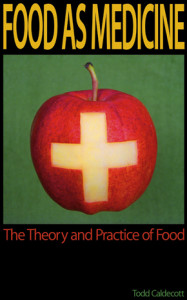

As usual, your advice here makes a lot of sense. I’d like to see how practical such a diet would be for me to feed to our 10-year-old-life-long-kibble-fed dog (35 kilos, husky/shepherd mix), especially because of my lack of familiarity with animal products (vegetarian). Have you ever done a price comparison between what you feed your dogs and what it would cost to feed them one of the “higher quality” (aka, not regular grocery store) brands of kibble? Maybe an easy way to answer that is, how much does it cost you to feed your larger dog for one week? Cost is a factor to consider when presenting the idea of change to my husband. Thank you, Todd. Also, I’m so glad your site is active again!
Hi Jacqueline,
On average we spend about $2-3 per day on the raw food diet for our medium-sized dog. For a large dog, however, you might be looking at $3-4 per day, depending on how much your dog eats. I don’t typically buy kibble, but the last price I looked at was about C$70 for a “high-quality” kibble that lasts about a month or so. And while the costs are comparable, you might consider all the health advantages of not feeding your dog kibble – which ends up saving you money: http://www.feedthis.com/rawvskibble.html
Thanks! Really useful article. I don’t have a dog, I have a snooty little kitty. By the way, what’s your opinion on rabies vaccination? My cat has always been an indoor cat. He’s 8 now, almost 9, but for the first 7 years of his life, he’s had shots every year at the vet (This was before we found our holistic vet). His next shot is due when he’s 10 as he got a 3-yr booster shot at age 7. Do you think we should skip it? Like I said, he is indoor kitty. The only thing is we travel a lot, and sometimes they want to see proof of no rabies, although I heard someone mention a rabies titer test could establish that, rather than vaccination?
Hi Lola
I don’t think rabies is necessary for your cat, since he’s both old and an indoor cat, his chances of tangling with wildlife are pretty slim. As for importing your cat, it depends on the country. If the cat is healthy, US Customs and Border Patrol does not require any testing or rabies vaccination (PDF file) to bring your cats across the border – however, the airline might require vaccination, so you should check first.
What would you suggest for a dog that developed pancreatitis recently (but has recovered) and now is supposed to eat a diet low in fat?
Hi Deborah,
I would want to know the history underlying the issue first before I could possibly make any recommendations. Doing so without any context would be irresponsible. I suggest you find a holistic vet to work with, or you can consult with me (I do remote consults if you’re not local).
I took my golden retriever off of kibble about a year ago and her health improved tremendously. But I am cooking her food. My dog gobbles her food in seconds. I feel like she’s always hungry. I am terrified to give her raw bones because I think she will choke or it will cut her esophagus or stomach. I know she needs something like your diet plan from the plague on her teeth and her constant begging for more food. Can you reassure me that the raw meaty bone diet is safe for her. Do I cut it up? What quantity do you give a 60-70 lb dog?
Dogs have been gnawing and chewing on bones since time immemorial. While you may need to watch your dog if s/he is new to chewing on raw bones, instinct should take over. Refer to the list of foods provided in the article. A 60-70 lb dog should be able to eat 2-3 lbs of raw meaty bones on a daily basis, but this will vary depending on appetite and activity level, as well as how much meat is on the bone.
Wonderful article! However, you mention, using Pomeranians as an example, that toys’ small bodies and digestive tracts preclude them from eating the same way as larger dogs. I have six “bigs” and one toy, so in what way should I feed the toy differently? Is it just a matter of less food/smaller pieces, or were you saying that toys can’t digest the same items that larger dogs can? I am positive my 16 yr old shih tzu would benefit from more protein and less grains, so what would you recommend? She does like organic butter and coconut oil! Also, what are you feelings on yogurt? I don’t want to give them much dairy, but is yogurt better for them due to the cultures?
Yes, your Shih Tzu should be able to eat the same things as your larger dogs – just make sure that the pieces of food are appropriate to the size of animal. When my dogs were young, I would also hold the meat, and let them rip pieces off, if it seemed they were having a hard time. My point in the article is that smaller, toy dogs, may have a better ability to tolerate more carbs in their diet, even if it isn’t necessarily optimal. Yogurt and dairy protein isn’t something I would recommend for dogs. Besides which, they don’t have much lactic acid bacteria in their gut – so dairy-based probiotics in this sense, aren’t helpful. Most of the bacteria in a dog’s gut are Firmicutes, Bacteroides and Fusobacteria, as well as other organisms like fungi and viruses.
Thank you so much for the clarification and info! No more dairy for my dogs, even yogurt! And even though the shih tzu loves carbs, I’m going to try to wean her off them completely! Thanks again!
Hi Todd,
I would like to start a raw meat diet for my dog who is 1 year old, 98 lb Husky/German Shepard mix. Do you have any suggestions on how much I should feed him during each feeding? Also, would you suggest slowly adding in a raw meat diet and still giving him some of his dry kibble?
I am hoping this helps to clear up his continual ear infections and red itchy ears.
Thanks, Andy
Hi Andy
I would expect somewhere between 500-750 g of raw meaty bone. As I have stated elsewhere, most dogs on a raw food diet tend to eat to satiation, i.e. don’t over-eat, but you should watch him and his stools, and make any adjustments accordingly. I would not suggest mixing raw food with kibble, but then again, I don’t suggest kibble at all!
Thank you!
Have searched your site and can’t find anything on cats.
My vet has said to try and keep preservatives out of the cats diet.
Have been feeding ‘Blue – Wilderness’ . Have tried raw diet… Frozen raw patties from pet store. He refused, even when finally cooked.
Do you have thoughts on a raw food diet for cats?
Nothing on cats so far, but the approach is similar. Avoid kibble and canned food.
Now that I am practicing the raw food diet for my dog I have been wondering what to bring when we are on an extended warm weather backpacking or canoe trips. Any ideas for raw food on the trail?
Also, my dog has been eating raw food for less than a month and his ear infection and goopy eyes have cleared up.
Thanks,
Andy
Traveling is a challenge with this type of diet. Packing in raw meat for the dogs would take up a lot of space and require refrigeration. There aren’t many good options here…. salt-free/sugar-free jerky might be an option (unless you make it yourself). But you would want to supplement this with some fat as well. If it isn’t a long trip, perhaps using a high quality kibble is the best alternative…. or, simply feed them what you’re eating, as long as it’s healthy…
When I change my dogs diets, will this also help them stop eating their poop? I have 4 dogs. Miniature Schnauzer, Yellow Lab, Border Collie/Australian Shepard Mix and an Australian Cattle. It is only the Lab and Collie that eat it. Also, exactly what types of smaller bones do you recommend? Short ribs in tact and feed it whole or soup bone mix? Thanks for any and all clarification.
Hi Kathleen
It isn’t totally unusual for dogs to eat poop, but if they are doing it regularly it can definitely be a sign of a malabsorption syndrome. The diet I suggest, above, will probably help out a lot.
Oh my! I just happened to stumble upon your site from Lord knows where and couldn’t read it all fast enough!
I’ve always believed that feeding my dogs through the years (I’ve had dogs of all kinds and my mom told me years ago, since I was born) and have had one all the way through life and I’m 57 now.
Growing up, my pets were fed a lot of raw meat, all of it fresh especially chicken since we raised them and when we would take one and with dignity, “prepare” one for the dinner table, most of the “scraps” like the innards and such we weren’t going to eat, my mom had us feed it to the dogs. All my dogs growing up lived well into their expected life expectancies. But since the late 70’s through now, it was always easier to feed them good dry food or, I was fed myself, a lot of nonsense through the pet food industry.
After losing a very special dog at the age of 9 last year due to cancer, I started looking at alternatives to conventional feeding. My wife is always making natural treats for the dogs we have now and we buy the best food we can and have done our homework on that as far as dry food goes with the “experts opinions and laboratory testing opinions”, but I started treating our dogs to real beef marrow bones and the occasional piece of raw meat like I did growing up as I have always had this gut feeling, that was what they needed. The “other half” still doesn’t want me to feed them any chicken parts raw but I’ve told her, in the past a dog or two I’ve had that would kill chickens on their own and devour them.
This article was the kick in the pants my wife will need to convince her to feed them what they would eat had mankind not got involved and thats what they would eat to survive on their own and that’s raw meat. As I said, I grew up this way decades ago but society even convinced me that their foods was the way to go, not anymore.
I will let you know the difference it makes in my dogs as I am a firm believer in this but your post will hopefully drive it home for my other half!
Thank you for caring! About us, and our pets! 🙂
You’re welcome! 🙂
We recently lost one of our dogs and since then our other dog has seemed depressed. He has never been a big “eater”, but since the other dog’s passing he barely eats his food. I came across this blog and am interested in trying this diet to see if it entices him to eat, but I am not sure where to start. He is a lab mix who typically weighs about 75lbs, when lasted weighed he was up to 85lbs. I can get chicken feet and chicken necks from my local butcher, but it’s a special order for a 40lb box at $.99/lb. They have beef knuckle bones for $.65/lb, but I’m not sure if these qualify as “small meaty beef bones and trim”. They have different types of offals starting out at $1.99/lb. Do you typically feed the same thing everyday, or do you always feed a variety. I need to be as cost effective as possible. What does a typical meal consist of for your dogs? Lastly, will this diet help with shedding? Thanks for your help.
You might try with something more enticing, such as some raw liver, feeding a little bit at a time. Offal is fed 1-2x/wk, and the rest is raw meaty bones. I explained everything else in the blog, and comments. As for shedding, this isn’t a dietary issue.
What do you think about nature’s variety instinct raw? I just started my tiny dachshund on it as I don’t think I’m smart enough to make raw dog food and I don’t want to screw up anything and make him suffer. So far he absolutely loves it as he’s a very picky eater and I noticed today his poo is crumbling which scared me but now I’ve seen online it’s normal. Is this an okay dog food?
It’s better than kibble and cans to be sure, but is probably quite pricey.